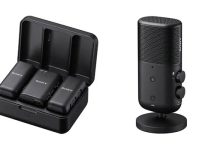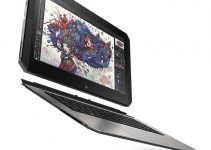While some confidently awaited for the A7SIII to come, others dug in their wallets and decided to invest in an A7III. It is, in fact, a great camera, although it may not be such video oriented as its counterpart the A7SII, it’s still a great value for its cost.
The small body, great ISO performance, crazy autofocus… there are a lot of things to love in this mirrorless. But what if you’d like to rig up the small beast and get a more versatile and complete build? With a little bit of DIY, some time to spare, and this video from Gerald Undone, you may be able to build the perfect rig for the A7III. Here’s how.
This setup is made of a long list of parts from mainly two manufacturers, SmallRig and IndiPRO. Both are quite affordable and make solid and sturdy products that will last long enough through various cameras.
The nice thing, in fact, is that aside from a couple of parts like the cage that’s made exactly for the A7SIII, most of the parts can be used on different cameras down the road, making a good investment for the future. With that out of the way, here’s the full part list:
- SmallRig A7R III (B&H, Amazon)
- SmallRig HDMI Cable Clamp (B&H, Amazon)
- SmallRig Mounting Plate with Dual 15mm Rod Clamps (B&H, Amazon)
- SmallRig 15mm Carbon Fiber Rod Set (22.5cm/9″) (B&H, Amazon)
- SmallRig Articulating Arm (7″) (B&H, Amazon)
- IndiPRO VMP15MM V-Mount Battery Adapter Plate with D-Tap Output and 15mm Rod System (B&H, Amazon)
- IndiPRO Tools Micro-Series V-Mount Li-Ion Battery (98Wh) (B&H, Amazon)
- IndiPRO Tools Mini-Tap to Sony L-Series Type Battery Dummy (30″) (B&H)
- IndiPRO Tools Coiled D-Tap to Sony NP-FZ100 Type Dummy Battery Cable (24-36″) (B&H)
- IndiPRO Tools D-Tap Pro Battery Charger (16.8V, 2.5A) (B&H)
The base of this rig is a cage from SmallRig combined with a small ball head and a nato rail handle. Parts from SmallRig are easily identifiable by the SKU, each piece has a unique number and is easy to track down on the website. The cage has a 1/4″ -20 screw that goes in the mounting hole under the camera.
Many users complain online about the wiggle the camera has inside the cage, so it’s worth noting that the screw underneath is not the only mounting point. The cage, in fact, can be secured to the strap holder on the side of the camera with a tiny Allen screw you get in the kit.
Aside from the handle that you can mount on any side of the cage, you can also secure a small HDMI cable holder. The latter may seem futile but is actually very very useful, as the mini-HDMI connector is prone to break or come out.
All the other accessories will go on a couple of 15mm rods. You will need a plate under the cage to install the rods under the camera. You can go either with the simple version listed here or with the quick-release one. The latter being a little more expensive, but it’s useful to have. It really depends on how often your workflow requires to detach the camera from the rig, like for mounting on a gimbal.
The rods will be the base all other gear straps on, starting from the V-lock plate, specifically the IndiPRO VMP15MM V-Mount Battery Adapter Plate with D-Tap Output. This is the first item on the list from IndiPRO, but it will not be the last. The main reason to have this plate is versatility.
There are other battery mounts, but the V-lock is one of the most valuable. While fixing the plates, remember to keep clearance on the battery door under the camera, it’s easy to overlook this detail. It may not be the end of the world, but you’re better off with the option to open it easily, and if you decide to power the camera with a dummy battery, it would be better to have access.
On a bigger cinema camera, you would mount easily a full V-lock battery, but on small mirrorless like this one, it would be way too much. Hence, the IndiPRO Tools Micro Series V-Mount compact V-lock battery is a godsend. It balances well the rig once mounted on the plate and has even a USB port if you need to feed the monitor.
On the Sony A7III, you may use the USB connection to power the camera, but it has some quirks. The first that comes to mind is the limit of the 2amps of maximum power absorption. Instead, you could go with a dummy battery with a D-tap connection that goes to V-lock plate, making an efficient and streamlined rig.
Using the friction arm you can place your monitor where you like it the most. In this case, we have an Atomos Ninja V monitor/recorder. Gerald’s choice of keeping it in the middle is good for the balance of the whole rig. Other options would make the weight lean in one direction. This way instead, it’s all more steady.
The inconvenience, though, is that you lose sight of the camera LCD. Depending on how much you access the menus during shooting this can become a big no-no.
To power the Atomos monitor, you can use a handy little adapter that goes from D-Tap to dummy Sony NPF, leaving also a USB socket available, so even if you don’t have one of those new V-locks with USB, there is still the option available. On top of this combo, you can mount a portable light, like the Aputure AL-F7.
It uses that USB port and it’s light and powerful. Plus, you can swivel it around easily to get the perfect setup. The last step you should consider is cable management. The pile of wires going up and down not only clutters the rig visually, but it may also impede movement or you may risk to get caught somewhere and tear it down. A few velcro straps will do the trick, making the final assembly nice and tidy.
Let’s get to the conclusion. This particular rig provides a ton of options the main one being the ability to shoot at least 3.45 hours, and up to 4.30 hours depending on how many accessories you set up, and that’s on the smallest V-lock battery available. But if you opt for a full V-lock, you can easily hit the eight-hour mark! That is indeed impressive.
The weight is not to be toss aside easily, we’re talking about 4.5kg here (almost 9 pounds) and although it may be less than expected, it’s still quite much. Sure, your tripod movement will be more stable, as will your handheld, but the time you can sustain such a weight is not that long. Therefore, if you plan on shooting handheld, you should consider some kind of shoulder pad. So, the rig is ready, time to shoot! Let us know what do you think of this configuration in the comments below.
[source: Gerald Undone]
Disclaimer: As an Amazon Associate partner and participant in B&H and Adorama Affiliate programmes, we earn a small comission from each purchase made through the affiliate links listed above at no additional cost to you.



